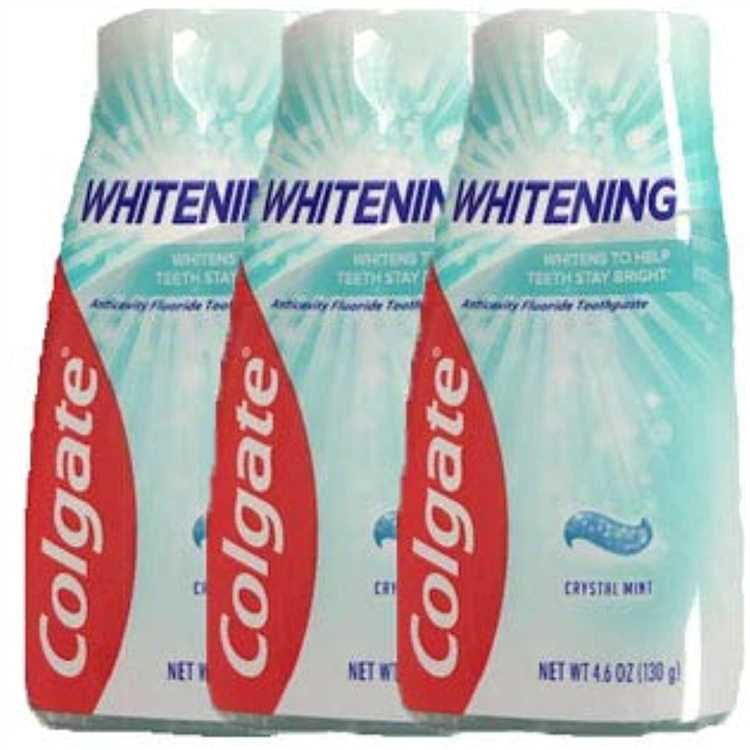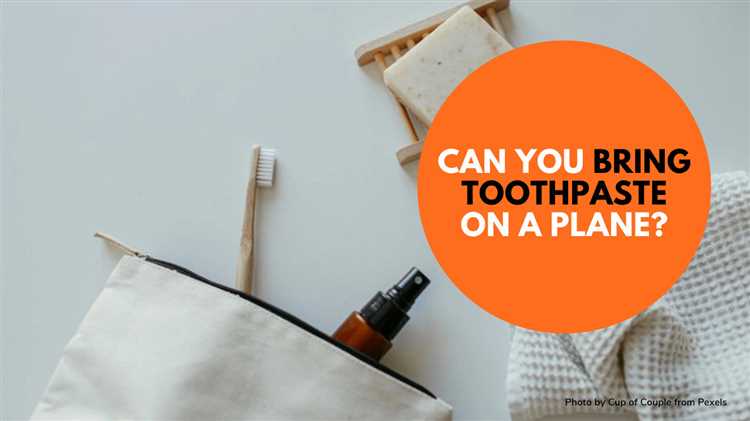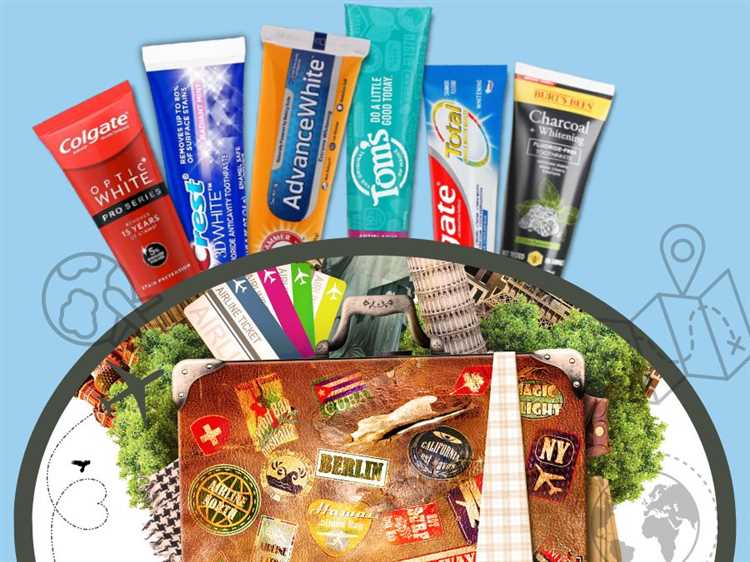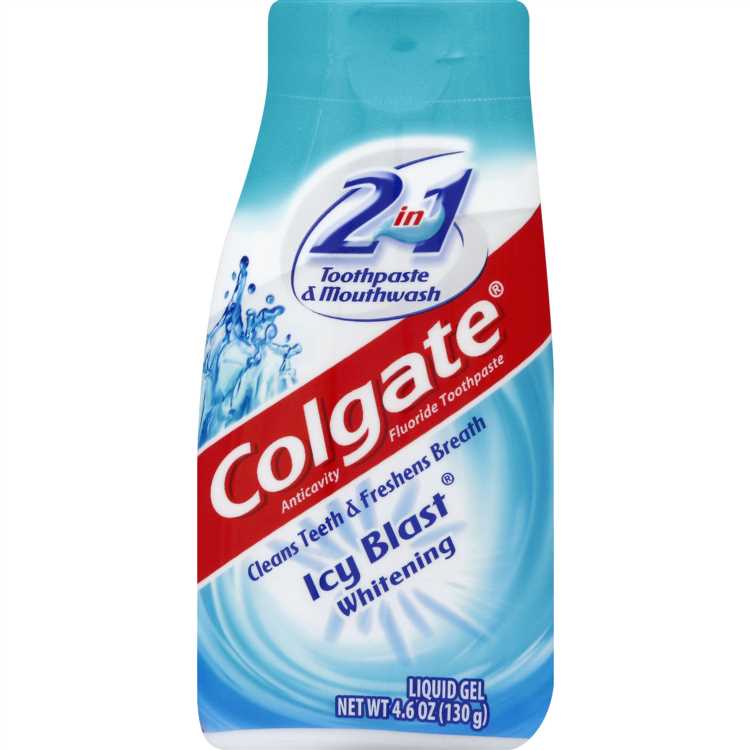When going through airport security or packing for a trip, it’s important to understand what items are considered liquids. One common item that often causes confusion is toothpaste. Many travellers wonder whether toothpaste is considered a liquid or if it falls under a different category. In order to answer this question, it’s important to understand how liquids are defined and whether toothpaste meets the criteria.
According to the guidelines set by the Transportation Security Administration (TSA), toothpaste is indeed considered a liquid. The TSA defines liquids as “any substances that are liquid, aerosol, gel, cream, or paste.” Toothpaste falls under the category of paste, and as such, it is subject to the same regulations as other liquids when it comes to travelling.
One of the main reasons why toothpaste is considered a liquid is its consistency and the fact that it can flow and change shape readily. Unlike solids, which have a fixed shape, toothpaste has a semi-liquid texture that allows it to be easily squeezed out of a tube. This characteristic makes it similar to other liquids that are subject to the TSA’s liquid restrictions.
So, when packing for your next trip, make sure to keep in mind that toothpaste is considered a liquid. To comply with the TSA regulations, be sure to pack your toothpaste in a clear, quart-sized bag and make sure each container holds no more than 3.4 ounces (100 milliliters). This will help ensure a smooth and hassle-free journey through airport security.
- What is toothpaste made of?
- Understanding the ingredients
- Is toothpaste a solid or a liquid?
- Determining the classification
- Factors affecting toothpaste consistency
- 1. Ingredients
- 2. Manufacturing process
- 3. Storage conditions
- 4. Brand and formulation
- Question-answer:
- Is toothpaste considered a liquid?
- Why is toothpaste not considered a liquid?
- Can toothpaste be carried in hand luggage on an airplane?
- Is toothpaste subject to the 3-1-1 rule for carry-on liquids?
- Can toothpaste freeze on an airplane?
- Is toothpaste considered a liquid or a solid?
- Can I bring toothpaste in my carry-on luggage?
What is toothpaste made of?

Toothpaste is a daily essential product used for maintaining oral hygiene. It is a gel or paste substance that is applied to a toothbrush and used to brush teeth. Toothpaste is made up of a combination of different ingredients that work together to clean and protect the teeth and gums.
One of the main ingredients in toothpaste is an abrasive agent, such as calcium carbonate or hydrated silica. These abrasive agents help to remove plaque and surface stains from the teeth, leaving them clean and polished.
Fluoride is another key component found in most toothpaste. It helps to strengthen tooth enamel and prevent tooth decay. Fluoride acts as a protective barrier for the teeth, making them less vulnerable to acid attacks from bacteria and sugary foods.
Toothpaste also contains a variety of ingredients that give it its texture and flavor. These can include humectants, such as glycerin, which help keep the toothpaste from drying out; thickeners, such as carrageenan or cellulose gum, which give the toothpaste its consistency; and sweeteners, such as saccharin or xylitol, to enhance the taste.
In addition, toothpaste may include other optional ingredients, depending on the specific brand and formulation. These can include antibacterial agents, such as triclosan or hydrogen peroxide, which help to kill bacteria in the mouth; desensitizing agents, such as potassium nitrate, which reduce sensitivity in the teeth; and herbal extracts or essential oils, which can provide a fresh and pleasant scent.
Overall, toothpaste is a carefully formulated product that combines various ingredients to effectively clean and protect the teeth. Regular use of toothpaste, along with proper brushing techniques, is crucial for maintaining good oral health.
Understanding the ingredients

To fully understand whether toothpaste is considered a liquid or not, it is essential to understand its ingredients. Toothpaste generally consists of a combination of surfactants, abrasives, fluoride compounds, humectants, thickening agents, flavorings, and preservatives.
Surfactants, such as sodium lauryl sulfate, create foam and help to disperse the toothpaste evenly throughout the mouth. They also aid in the removal of plaque and food particles from the teeth.
Abrasives, such as calcium carbonate or silica, provide the grittiness that helps to remove plaque and surface stains from the teeth. However, the abrasives used in toothpaste are generally fine particles and do not pose a risk in terms of the liquid restrictions at airports.
Fluoride compounds, such as sodium fluoride or stannous fluoride, help to strengthen tooth enamel and prevent tooth decay. These compounds are crucial in maintaining good oral health.
Humectants, such as glycerin or sorbitol, provide moisture and help to keep the toothpaste from drying out. They also contribute to the smooth texture of the toothpaste.
Thickening agents, such as carrageenan or cellulose gum, help to give toothpaste its characteristic texture. They also contribute to the overall stability of the toothpaste.
Flavorings, such as mint or fruit extracts, are added to toothpaste to enhance the taste and provide a fresh sensation during brushing.
Preservatives, such as sodium benzoate or potassium sorbate, are used to prevent the growth of bacteria or fungi in toothpaste, ensuring its shelf life.
Overall, toothpaste is a combination of various ingredients that work together to clean and protect the teeth. While it may contain some liquid components, the overall consistency and composition of toothpaste make it more of a semi-solid substance rather than a pure liquid.
Is toothpaste a solid or a liquid?

Toothpaste is considered to be a type of semi-solid substance. It is commonly categorized as a gel or paste, which means it falls somewhere between a solid and a liquid in terms of its physical properties.
Although toothpaste may appear to be a solid when squeezed out of the tube, it has a high water content that gives it a more fluid consistency. This allows it to be easily spread onto a toothbrush and then onto the teeth.
Additionally, toothpaste contains other ingredients, such as abrasives, flavors, and chemicals, which further contribute to its semi-solid nature. These ingredients help to give toothpaste its unique texture and taste, as well as provide the necessary cleaning and oral health benefits.
Overall, toothpaste can be considered a solid-like substance due to its ability to hold its shape and form, but it also exhibits properties of a liquid, such as flow and viscosity. So, while it may not fit neatly into either category, toothpaste is typically classified as a semi-solid material.
Determining the classification
When determining whether toothpaste is considered a liquid, it is important to consider the guidelines set forth by the Transportation Security Administration (TSA), which is responsible for airport security in the United States. According to the TSA, liquids are defined as “items that are liquid, gel, aerosol, cream, or paste substances.”
Based on this definition, toothpaste falls under the classification of a paste substance. However, it is worth noting that the TSA has specific size restrictions for carrying liquids, gels, and aerosols in carry-on luggage, commonly referred to as the “3-1-1 rule.” This rule states that all liquids, gels, and aerosols must be in containers that are 3.4 ounces (100 milliliters) or less and all containers must fit into a single quart-sized bag.
Therefore, while toothpaste is considered a paste substance, it is still subject to the size restrictions outlined by the TSA. If your toothpaste exceeds the allowed container size, it may be confiscated at the security checkpoint.
It is important to familiarize yourself with the specific guidelines and regulations of the transportation authority in your country or the country you are traveling to, as these rules may vary. Additionally, if you are unsure about the classification of a particular product, it is always best to check with the transportation authority or airline directly for clarification.
Factors affecting toothpaste consistency
When it comes to toothpaste, consistency is an important factor that can greatly affect its usability and effectiveness. There are several key factors that can influence the consistency of toothpaste:
1. Ingredients
The ingredients used in toothpaste formulation play a major role in determining its consistency. Each ingredient has its own unique properties that can affect the texture and thickness of the toothpaste. For example, the type and concentration of thickeners, such as silica or cellulose gum, can influence the viscosity and overall firmness of the toothpaste.
2. Manufacturing process
The manufacturing process also has an impact on toothpaste consistency. Factors such as mixing speed, temperature, and duration can affect the final texture. For example, inadequate mixing can result in a lumpy or uneven consistency, while excessive heat can cause the toothpaste to become too runny or thin.
3. Storage conditions

The way toothpaste is stored can also affect its consistency. Changes in temperature, exposure to air, and moisture can all cause the toothpaste to thicken or become more liquid. It is important to store toothpaste in a cool, dry place to maintain its desired consistency.
4. Brand and formulation

Different brands may have their own unique formulation and manufacturing processes, which can result in variations in consistency. Some brands may prioritize a thicker paste, while others may opt for a more gel-like texture. Additionally, specific formulations, such as those for sensitive teeth or whitening, may have different textures due to the inclusion of additional ingredients.
| Factor | Effect on Toothpaste Consistency |
|---|---|
| Ingredients | Determines thickness and texture |
| Manufacturing process | Affects texture and uniformity |
| Storage conditions | Can cause thickening or thinning |
| Brand and formulation | Varies based on brand and specific formulation |
Question-answer:
Is toothpaste considered a liquid?
Toothpaste is not considered a liquid. It is actually classified as a semi-solid or a paste.
Why is toothpaste not considered a liquid?
Toothpaste is a mixture of different substances, including water, humectants, abrasives, and fluoride. Because of its thick consistency, it does not flow like a liquid and is therefore classified as a semi-solid.
Can toothpaste be carried in hand luggage on an airplane?
Yes, toothpaste can be carried in hand luggage on an airplane. The Transportation Security Administration (TSA) allows travel-sized toothpaste tubes that are 3.4 ounces (100 milliliters) or less in carry-on bags.
Is toothpaste subject to the 3-1-1 rule for carry-on liquids?
Yes, toothpaste is subject to the 3-1-1 rule for carry-on liquids. This means that toothpaste must be in a container that is 3.4 ounces (100 milliliters) or less, and all containers must fit in a single quart-sized plastic bag for security screening.
Can toothpaste freeze on an airplane?
Yes, toothpaste can freeze on an airplane if the temperature inside the cargo hold drops below freezing point. It is recommended to pack toothpaste in your carry-on bag to prevent it from freezing during the flight.
Is toothpaste considered a liquid or a solid?
Toothpaste is typically considered a semi-solid or a gel. It has a thick consistency that allows it to be squeezed out of a tube, but it does not flow freely like a liquid.
Can I bring toothpaste in my carry-on luggage?
Yes, you can bring toothpaste in your carry-on luggage, but there are restrictions on the size of the container. The Transportation Security Administration (TSA) allows containers of toothpaste that are 3.4 ounces (100 milliliters) or smaller to be carried on board. Anything larger than that must be placed in checked luggage.
